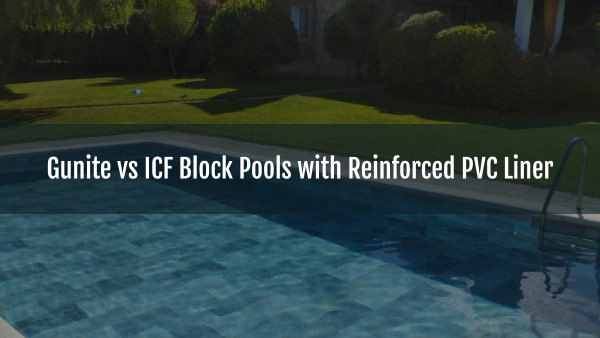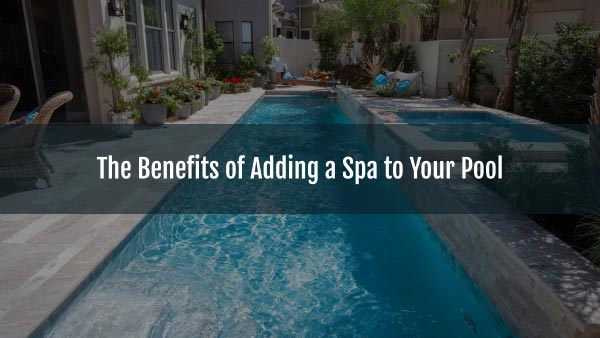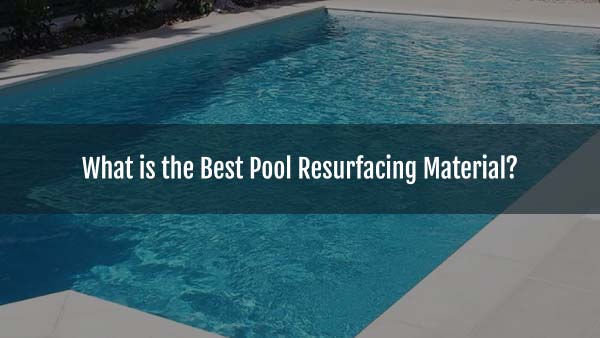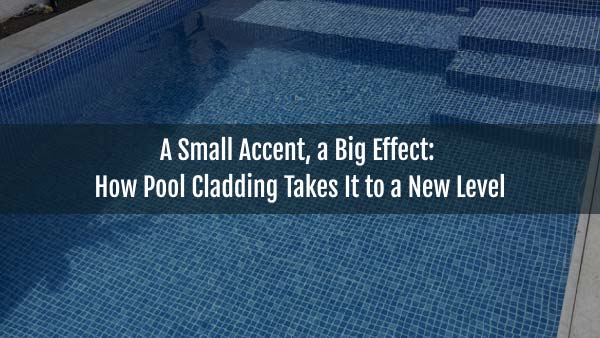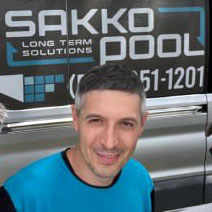Pool surface repair is an important maintenance task that restores the appearance, functionality, and safety of the pool. However, according to any experienced pool construction company, one of the most common questions asked by pool owners is, “How soon can I swim after the surface has been repaired?” The answer depends on the type of material used for pool resurfacing, as each has its own curing time, advantages, and disadvantages. This article discusses the time frames for swimming after surface repairs using popular pool lining materials—plaster, aggregate coatings, tiles, and thick reinforced PVC membranes—with an indication of their advantages and disadvantages for a wide audience.
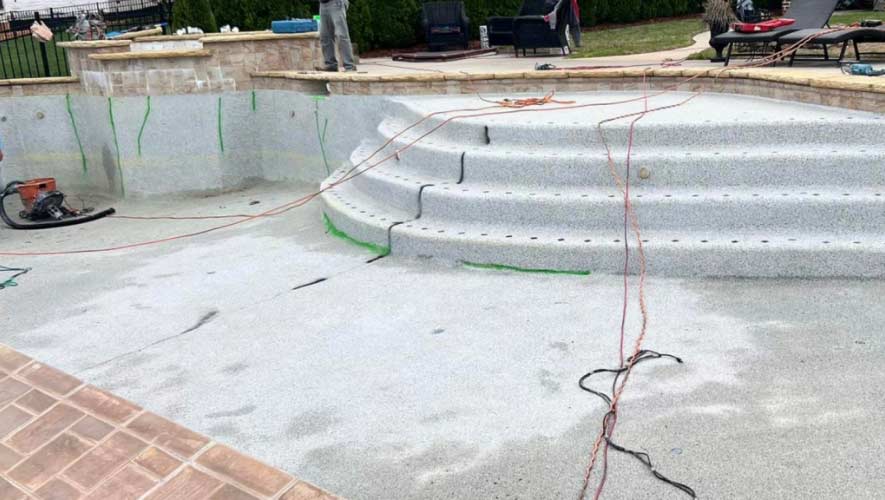
Popular Pool Lining Materials and Their Characteristics
Materials for repairing pool surfaces vary in strength, aesthetic qualities, cost, and maintenance requirements. Below is an overview of the most common types, as well as their advantages and disadvantages:
Plaster:
- Description:
- A traditional smooth finish made from Portland cement, silica sand, pozzolan (microsilica or fly ash), polymer additives, and water, often mixed with dyes to add color. Marble dust is often added to white pool plaster in addition to sand
- Advantages:
- Affordable price, making it a budget option
- Provides a classic smooth surface that is comfortable for swimmers
- Widely available and can be adapted to different colors
- Disadvantages:
- Prone to cracking, staining, and algae growth, requiring frequent maintenance
- Shorter service life (5–10 years) compared to other materials
- Susceptible to damage if the chemical composition of the water is incorrect
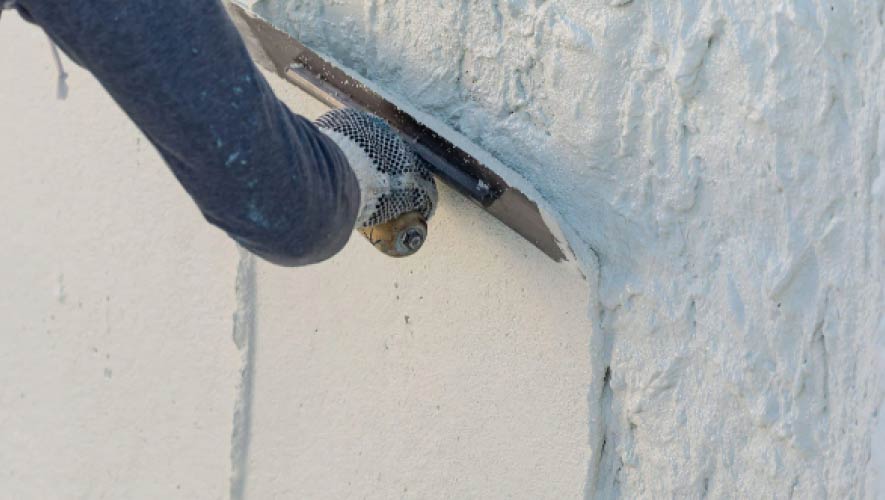
Aggregate coatings (pebbles or quartz):
- Description:
- a mixture of plaster with pebbles or quartz to create a textured, durable surface
- Advantages:
- More durable than plaster (10–15 years)
- More resistant to stains and chemicals than regular plaster
- Provides a natural, high-end aesthetic
- Disadvantages:
- More expensive than plaster
- The rough texture may be less comfortable for some swimmers
- Requires regular maintenance to prevent scaling or cracking
Tiles:
- Description:
- Ceramic or glass tiles applied to the inner surface of the pool give it an exquisite look
- Advantages:
- High durability, service life of 10–15 years
- Resistance to stains, chemicals, and algae
- Can be customized with complex designs and patterns
- Disadvantages:
- Expensive installation and repair
- Installation is time-consuming and labor-intensive
- The joints between the tiles may require periodic cleaning or sealing
Thick reinforced PVC membrane:
- Description:
- flexible synthetic polyvinyl chloride cladding with reinforced layers for strength
- Advantages:
- Durable (20+ years with proper care, e.g., Cefil 60 mil pool liner)
- Requires no special maintenance thanks to its non-porous surface with acrylic varnish, resistant to algae and stains
- Cost-effective and quick to install, with customizable colors and textures that realistically mimic tile or natural stone
- Disadvantages:
- Requires professional installation to avoid wrinkles or leaks

Swimming Timelines After Resurfacing
The time required before it is safe to swim in a pool with a resurfaced surface depends on the curing or setting process of the material. Below is a breakdown for each material:
Plaster:
- Waiting time: 7–14 days
- Reason: Plaster requires a curing process during which it hardens and bonds with the pool surface. After application, the pool is immediately filled with water to prevent cracking, but the plaster needs time to cure completely. Swimming too early can disrupt the hardening process, resulting in surface irregularities or chemical imbalance
- Process: After filling the pool, the chemical composition of the water (pH level, alkalinity, and chlorine content) must be balanced over several days. The “start-up” process, which is often carried out under the guidance of professionals, ensures proper hardening, which usually takes 7–10 days for standard plaster or up to 14 days for colored plaster
- Tip: Avoid swimming until the water is balanced and the plaster has hardened, as confirmed by a specialist
Aggregate coatings:
- Waiting time: 7–14 days
- Reason: Like plaster, aggregate coatings require curing after application. The pool is filled immediately to protect the surface, but the material needs time to cure completely. The presence of pebbles or quartz may slightly increase the curing time compared to regular plaster
- Process: Water balancing and a start-up process similar to plastering are required, which takes about 7–10 days for most aggregate finishes. Some premium finishes may require up to 14 days for optimal curing
- Tip: Follow the contractor’s curing instructions to ensure the surface cures evenly and remains durable
Tiles:
- Waiting time: 2–5 days
- Reason: Tile installation involves securing the tiles with adhesive and grout, which requires less time to set than plaster-based materials. Once the grout has hardened (usually 24–48 hours), the pool can be filled and water balancing can begin
- Process: After installation, the pool is filled within 1–2 days. Balancing the chemical composition of the water takes an additional 1–3 days, allowing swimming to begin 2–5 days after completion of the work, depending on the grout and adhesive used
- Tip: Before swimming, make sure the grout is completely set to prevent premature wear or staining
Thick reinforced PVC membrane:
- Waiting time: 24 hours
- Reason: PVC membranes are manufactured in strips and supplied in rolls. The length of such a strip, for example, for Cefil 60 mil, is 82′, and the width is 5′3″. After cutting the strips to the shape of the pool and thermally welding them together, liquid PVC is applied to the welded seams. This guarantees complete waterproofing. However, it takes one day for it to harden completely (the exact time is specified in the instructions for the specific type of liquid PVC). After that, the pool can be filled with water immediately
- Process: After filling the pool, the chemical composition of the water is adjusted for 1–2 days, allowing you to start swimming shortly thereafter
- Tip: Before filling the pool, check with the installer that the seams are properly sealed to avoid leaks

Factors Affecting Swimming Timelines
Regardless of the material, several factors can affect how soon you can swim after surface repair:
- Pool size and complexity: Large pools or pools with complex shapes can increase installation or curing time
- Water chemistry: Proper pH, alkalinity, and chlorine balance are critical to preventing damage to the new surface or harm to swimmers
- Climate: Humid or cold conditions can slow the curing of plaster and aggregate finishes, while PVC membranes and tile are less susceptible to this effect
- Contractor experience: Professional installation and commissioning ensure optimal pool readiness and water balance, reducing wait times
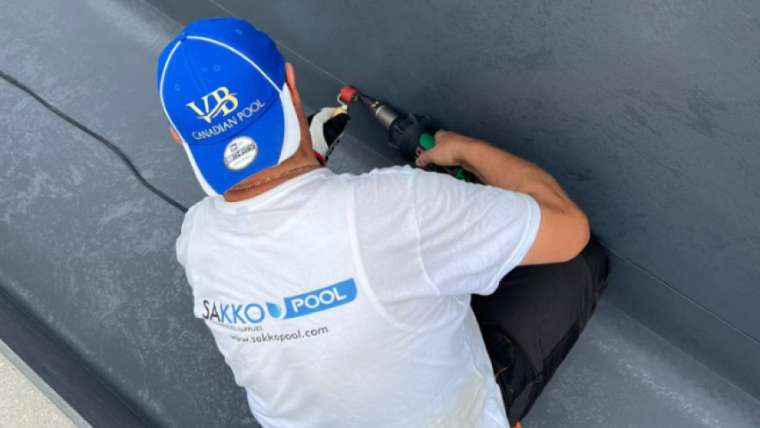
Have Questions?
Talk to our specialist! Just fill out the form, and we’ll give you a call!
Conclusion
The time required before swimming is possible after pool renovation depends on the material: 7–14 days for plaster and aggregate coatings, 2–5 days for tiles, and 1–2 days for thick reinforced PVC membranes. Each material has its own unique advantages, from the affordability of plaster to the durability and low maintenance costs of PVC membranes. However, when choosing, you should also consider their disadvantages, such as the high maintenance costs of plaster or the cost of tiles. Always consult with professional pool builders in Wellington such as SAKKO POOL to ensure proper installation and water balancing for safe and enjoyable swimming in the shortest possible time.

